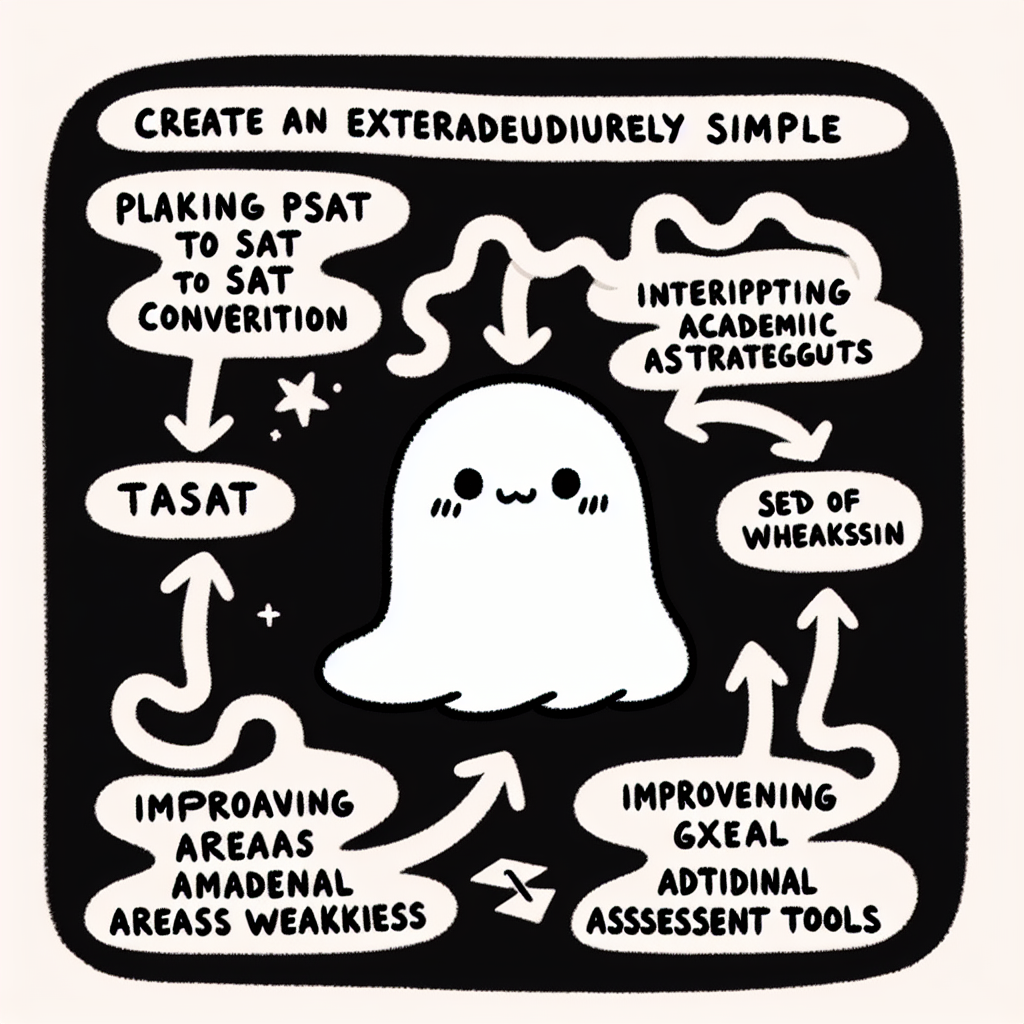Introduction
Understanding the relationship between PSAT and SAT scores is essential for students, educators, and parents who want to assess college readiness and plan effective test preparation strategies. The PSAT, while primarily known as the qualifying test for the National Merit Scholarship Program, also serves as a useful indicator of potential SAT performance.
This guide explores how to interpret PSAT scores in the context of SAT readiness, using data, research, and expert resources. By examining patterns in score conversions, trends across student populations, and official tools provided by the College Board, we aim to clarify the psat to sat conversion process and help stakeholders make informed decisions based on students’ performance.

Overview of the SAT Suite of Assessments
The SAT Suite of Assessments is a series of standardized tests administered by the College Board that provides a consistent framework for measuring students’ readiness for college and career paths. Each test in the suite is designed for a specific grade level and purpose, and together they form a vertically aligned system that supports long-term academic development and planning.
What Is the SAT Suite?
The suite includes the following assessments:
- PSAT 8/9: Administered to students in 8th and 9th grade, this test establishes a baseline for college readiness.
- PSAT 10: Designed for 10th-grade students, it provides practice for the SAT and insight into academic progress.
- PSAT/NMSQT: Available to 10th and 11th graders, this version also serves as the qualifying test for the National Merit Scholarship Program.
- SAT: Typically taken in 11th or 12th grade, it is used in college admissions to assess a student’s readiness for postsecondary education.
Purpose and Design
The entire suite is intended to evaluate college and career readiness over time. All tests share a common format and question types, allowing for consistent measurement across grade levels. This alignment makes psat to sat conversion possible by enabling educators and students to track progress and identify areas for improvement.
Scoring Scales Across the Suite
The SAT Suite uses scaled scores that allow for meaningful comparisons:
- PSAT 8/9: 240–1440
- PSAT 10 and PSAT/NMSQT: 320–1520
- SAT: 400–1600
These score ranges are designed to reflect the level of knowledge and skills expected at each grade level. As students progress through the suite, their scores can be used to estimate future SAT performance, supporting psat to sat conversion efforts.
➡️ Wikipedia's PSAT/NMSQT Entry provides a comprehensive overview of the PSAT's role and scoring.

📊 Exploring College Board’s Data Archive
Accessing Historical Data
When working on a PSAT to SAT conversion, exploring the College Board’s data archive is a valuable step. The College Board maintains comprehensive score data for all assessments in the SAT Suite of Assessments, including the PSAT/NMSQT and SAT. Their reports provide detailed statistics such as mean scores, percentiles, and standard deviations, which are essential for understanding how scores compare across administrations and years.
You can explore this data through the College Board's SAT Suite Data and Reports Archive, which offers downloadable reports spanning multiple years. These resources allow users to identify patterns and anomalies in test performance over time, an important factor when comparing PSAT and SAT scores.
Understanding Score Distributions
Score distributions play a crucial role in PSAT to SAT conversion. By analyzing historical trends, educators and students can observe how average scores shift from year to year. This context helps in interpreting individual results more accurately, especially when aligning PSAT scores with projected SAT outcomes.
Educators, in particular, benefit from understanding these distributions to track cohort performance and benchmark progress. The College Board's Educator Resources provide detailed guidance on how to read and interpret online score reports, making it easier to glean actionable insights from the data.

📈 Trends in PSAT and SAT Performance
Score Progression Across Grade Levels
Students typically follow a trajectory of increasing scores as they move through the different stages of the PSAT and SAT assessments. Beginning with the PSAT 8/9, followed by the PSAT 10, then the PSAT/NMSQT, and culminating in the SAT, this sequence reflects a natural progression aligned with academic development and maturity. As students advance in grade level, their familiarity with test formats and exposure to relevant coursework improve, often resulting in higher scores.
Predictive analytics play a key role in the psat to sat conversion process. Educational institutions and testing organizations use PSAT scores to estimate future SAT performance, helping students and educators plan accordingly. This forecasting is based on historical data that shows strong correlations between earlier PSAT results and later SAT outcomes.
Implications for College Readiness
The psat to sat conversion framework provides valuable insight into a student’s academic preparedness. PSAT scores offer early indicators of strengths and areas needing improvement, allowing students to target their SAT preparation more effectively. By identifying weaknesses early, students can address gaps before taking the SAT, increasing their chances of achieving competitive scores.
Schools also benefit from analyzing aggregate PSAT data. Patterns in student performance can inform curriculum adjustments and targeted interventions. This data-driven approach helps align instruction with the skills and knowledge assessed on the SAT, enhancing overall college readiness.
Research supports the predictive value of standardized testing. The study "Data Mining the University" highlights the ability of SAT scores to forecast college GPA, emphasizing the importance of early benchmarking through the PSAT. This further validates the strategic use of psat to sat conversion models in academic planning and college admissions preparation.

📐 Understanding PSAT to SAT Score Conversion
How Conversion Works
The PSAT and SAT are both part of the College Board’s Suite of Assessments and are scored on a shared scale that allows for general comparison. However, they are not identical. The PSAT is slightly less difficult than the SAT and contains fewer questions, which results in overall lower score ceilings.
Because of these structural differences, converting a PSAT score to an SAT score is not an exact science. Instead, students and educators rely on estimated conversion ranges to understand how a PSAT performance might translate to the SAT. These estimates are helpful for goal-setting, but they are not guaranteed outcomes. According to The Princeton Review Guide, the scoring scales are aligned to provide insights into potential SAT performance, but actual results depend on multiple variables.
Sample Conversion Table (Example Only)
PSAT/NMSQT ScoreEstimated SAT Score12001260–130013001360–140014001460–1500
Factors Affecting Conversion Accuracy
Several factors influence the accuracy of PSAT to SAT conversion estimates:
- Student preparation between tests: Additional study or test prep between taking the PSAT and the SAT can lead to higher SAT scores.
- Test-day conditions: Factors such as sleep, stress, and testing environment can affect performance.
- Grade-level differences: Students often take the PSAT in 10th or 11th grade and the SAT later, so maturity and academic growth can impact scores.
- Variability in test forms: Different versions of the SAT and PSAT may vary slightly in difficulty, which can influence scoring.
Understanding these elements helps set realistic expectations when using PSAT to SAT conversion estimates.

🧠 Using PSAT Scores Strategically
For Students
PSAT scores offer a valuable starting point for students planning their SAT journey. By reviewing score reports, students can clearly identify academic strengths and weaknesses across reading, writing, and math. This insight allows students to set realistic SAT score goals based on their current performance and the typical PSAT to SAT conversion trends. Once goals are established, students can create a focused study plan, concentrating on areas that need the most improvement to maximize future SAT performance.
For Educators
Educators can use PSAT scores to track student growth over time and identify patterns in academic performance. The data helps in developing targeted interventions for students who may need additional support in specific content areas. Moreover, aggregated PSAT results can guide curriculum development, ensuring instructional strategies are aligned with college readiness benchmarks reflected in PSAT and SAT expectations.
For Parents
Parents can use PSAT scores to better understand where their child stands on the path to college readiness. The scores provide a preview of potential SAT performance, especially when interpreted using a reliable PSAT to SAT conversion. This understanding enables parents to support their children with appropriate resources, such as tutoring or test prep programs, tailored to areas of need. By staying informed, parents play a key role in helping students prepare effectively for the SAT.

Limitations and Considerations
While PSAT to SAT conversion tools can provide helpful estimates, there are important limitations and factors to consider.
First, PSAT scores are not perfect predictors of SAT performance. Although the two exams are similar in format and content, differences in difficulty and scoring scale mean that a PSAT score only offers a rough approximation of potential SAT results.
External influences such as tutoring, coursework, and student maturity can also impact actual SAT scores. A student who invests time in targeted SAT prep or gains academic experience after taking the PSAT may outperform their expected conversion.
It's important to remember that conversions are estimations, not direct correlations. They're based on statistical models and past data trends, but individual outcomes can vary widely.
Finally, test scores are just one part of a student’s academic profile. Admissions decisions and academic readiness should take into account grades, extracurriculars, teacher recommendations, and other achievements—not just PSAT or SAT scores.

Conclusion
Using PSAT to SAT conversion as part of academic planning can offer valuable insights for students and educators. It provides a standardized way to estimate future SAT performance based on PSAT results, helping guide preparation strategies and set realistic goals. However, it is important to interpret these conversions within the broader context of individual learning progress and college readiness benchmarks.
The PSAT and SAT are aligned in structure and scoring scale, but they differ slightly in difficulty and scope. Understanding these nuances helps ensure that conversions are not misused or over-relied upon. Instead, they should serve as one of several tools in evaluating a student's academic trajectory.
Ultimately, thoughtful use of PSAT to SAT conversion allows for informed decision-making, whether it’s identifying areas for improvement, choosing appropriate test dates, or setting long-term academic goals. When combined with other metrics and insights, it supports a well-rounded approach to college preparation.
📚 Resources Cited
- College Board's SAT Suite Data and Reports Archive
- College Board's Educator Resources
- "Data Mining the University"
- Wikipedia's PSAT/NMSQT Entry
- The Princeton Review Guide














